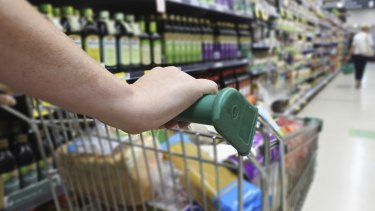The Great Cancellation: Australians ditch subscriptions amid inflation
Willoughby resident Steven Kechichian has been enjoying trips to the cinema. The second-year university student has taken advantage of the cheaper tickets aimed at tempting people back after lockdown.
It’s the only way the 22-year-old catches a film these days, after he and his mother both quit their Netflix and Stan* subscriptions.
“I don’t know if you’ve seen, but the movies have had some pretty good incentives recently,” he tells The Sydney Morning Herald and The Age. “We enjoy the experience a lot more there.”

Just months ago, his household of five had a bad case of subscription double-ups. But since inflation began its rapid ascent earlier this year, his sister is now the only one in the family still hanging onto Netflix. Steven’s dad now prefers discount supermarket Aldi over Woolworths, and though temperatures have dropped, the gas heater rarely gets switched on.
To cut costs wherever he can, Steven’s scrapped his gym membership, too. The threat of future interest rate hikes looms over him: he’s hoping to get a foot on the property ladder one day.
“I have more important things to be purchasing or saving up for, ahead of some very uncertain times … Every little bit helps.”
The thought of signing back up to Stan or Netflix hasn’t even crossed his mind. “They’re not needs, just a want. It’s not really on the priority list.”
On the other side of Sydney, in the south-western suburb of Camden, Julianne Taylor and her family are in a different set of circumstances, but share the same concerns.
The pair gave up Foxtel, Stan, and Amazon Prime in early April. “We’ve still got Netflix,” Julianne says. “You’ve got to keep something.” They, too, have made the switch from Woolies to Aldi and have gone a step further by planting their own veggie patch to get around supermarket price rises. Her children are delighted with their new pet chickens and fresh eggs.
“There’s been a lot of changes in my family,” she says. “We just don’t know what the foreseeable future looks like.”

Julianne, who started her own swimwear label at the end of 2019 that showed promising signs of success before the pandemic decimated thousands of small businesses, is now looking for extra work ahead of interest rate hikes she knows are coming.
“Our mortgage will go up about $700 or $800 for us by the end of the year, every month,” she says. “It’s been a real shock to the system.”
Rising interest rate payments and the cost of living have become the most pressing issues for everyday Australians – and the dominant theme in the lead-up to the federal election. And while the economy has rebounded strongly from crippling lockdowns and Australians are excited to be out and about again, they’re also taking a long, hard look at their household budgets and outgoing expenses.
Economists have begun observing some shifts in consumption habits.
“What we are seeing is some switches,” NAB chief economist Alan Oster said. Money was starting to flow out of non-essential retail items and into necessities like petrol, he added. “[People] will slow on discretionary retail, things you don’t necessarily need to go to. You don’t need to go to a restaurant.”
In the supermarket, shoppers may opt for cheaper cuts of steak. “You might try and get by with lesser-quality foods, you might delay some internal renovation,” Oster said. “That’s typically what you see during a slowdown.”
CBA’s household spending intentions index slid 3.8 per cent in April after hitting a high in March. The biggest drops were in home buying (down 21.5 per cent), health and fitness (down 14 per cent) and transport (down 8.6 per cent), largely attributable to the fuel excise cut.

CBA economist Stephen Wu says vehicles, household furnishing, clothing, and “various recreational things” are some of the first areas where spending might pull back.
“I guess the question is … how households will respond in the coming months as rate hikes are put into place,” Wu added.
Is Australia’s ‘Great Cancellation’ here?
For budget-conscious Australians, subscriptions are an expense commonly in the firing line. This masthead has heard from dozens of others who have cancelled one of some kind to reduce costs.
They’re the heralds of a seemingly global emerging trend that has been dubbed the “Great Cancellation” in the UK. It’s not just streaming platforms that are going out the window (though Netflix has reason to be worried); health insurance is an example of another expense some have decided they can go without. Fifteen per cent of Australians won’t renew their health insurance this year, and another 13 per cent will switch for a better deal, Finder data reveals.
Accountant Sheilana Prosper, whose microbusiness struggled through cash-flow issues during the pandemic, made the difficult decision with her partner to dump their health covers last April despite both having chronic health conditions that require regular specialist check-ups.

“It’s probably one of the ultimate subscriptions,” she says. “We just couldn’t afford it.
“It’s been a character-building exercise over the last two years.”
These days, Prosper’s business is in healthier shape. But now that she has inflation and rising interest rates to contend with, she’s in no rush to sign back up to health insurance.
“We’re doing okay now, but it’s still going back to that $500-a-month commitment. Can we keep doing that again?” she pondered. Fuel alone is costing her $100 a week. “That’s just local driving.”
In contrast to Steven Kechichian, Prosper has decided to keep Netflix and Foxtel for the family, at the expense of trips to the cinema.
“It’s not just the ticket. It’s all the extras; you’ve got to have the popcorn, you’ve got to have the choc-top cone. It just gets a bit out of control.”
Businesses fight to keep flighty customers
Like Prosper, many are hanging onto their streaming accounts but opting to cut their budget in other places. Spending levels on digital goods and subscription services haven’t dropped dramatically yet, according to data from research company illion. One reason is because the pandemic has had a permanent impact on our lifestyle habits.
“Our spend patterns and what we define it as discretionary and essential might have potentially changed,” said illion head of analytics, data and insights, Louis Tsang, pointing to the take-up of food-delivery services like Uber Eats or Deliveroo during lockdown.
“Previously, perhaps food delivery was not an essential part of household consumer spending. Now it’s becoming more of the norm.”
Subscription management software company Zuora strategist Nick Cherrier says it’s common for households to review their entertainment budgets in times of mounting inflationary pressures, but doesn’t believe there’s “subscription fatigue”.
“What we do see is a very competitive environment when it comes to streaming,” he said. With Netflix, Stan, Binge, Disney+, Paramount+, Amazon Prime, Apple TV+ and more to choose from, consumers are spoilt for choice. “You would look at that and say: do we need all that?”
Smarter subscription services will anticipate competition and pressures and offer a downgrade option. “Businesses that do that will probably have a higher retention than businesses with a very simple offering,” said Cherrier.
Up to the end of 2021, Zuora data shows churn levels actually fell from 6.3 per cent to 5.4 per cent. But Cherrier notes the data is more than half a year old, and doesn’t take into account inflation concerns.
“If we have the same chat in about six months’ time, I may be able to say: well actually, this time around the churn has increased,” he said.
*Stan is owned by Nine which owns this masthead.
The Business Briefing newsletter delivers major stories, exclusive coverage and expert opinion. Sign up to get it every weekday morning.
Most Viewed in Business
Source: Thanks smh.com